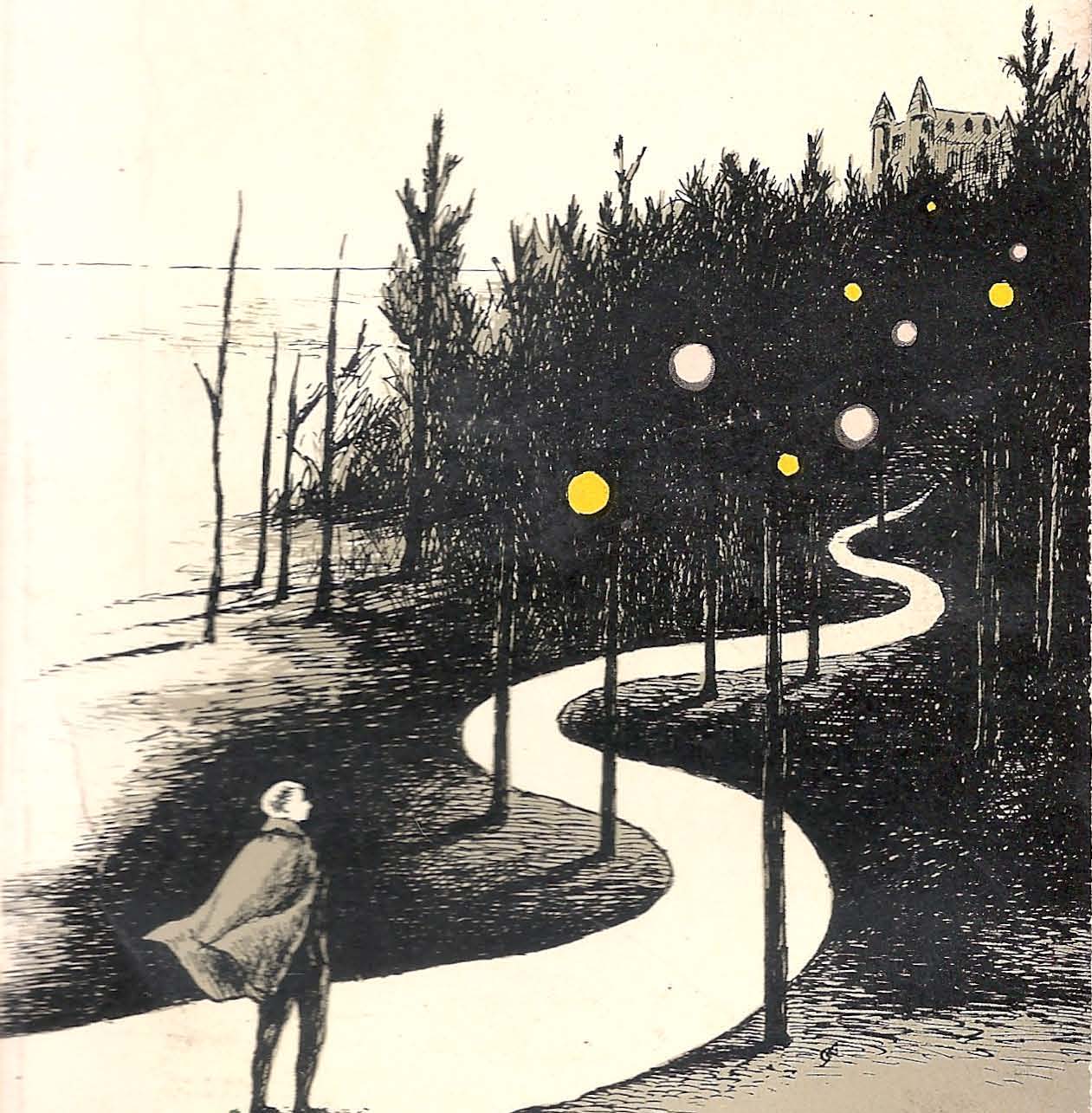Welcome toSmall Humans,Obsession Archives an ongoing series at Mashable that looks at how to take care of – and deal with – the kids in your life. Because Dr. Spock is nice and all, but it’s 2019 and we have the entire internet to contend with.
This story is sponsored by Verizon.
When I first heard about the Momo challenge, I was tempted to curtail my kids’ internet access for all eternity to prevent them from ever encountering such a sinister character – and I wasn't alone. Photos of Momo, the menacing character that was rumored to force internet users to commit harmful acts, terrified kids. Megan McClain, a mother in California, says her five-year-old son saw an image of Momo at school during computer time when classmates Googled the term.
“After that, my son would wake up with nightmares,” says McClain. “I had to assure him Momo was just a statue; it didn’t move or talk.”
Obviously, keeping my kids off the internet forever isn't a realistic solution. Sarah Gretter, a senior learning experience designer at the Hub for Innovation in Learning and Technology at Michigan State University, says a sounder approach for parents is to keep the conversation open and ask kids questions about the stories they read online. Such conversations build children’s media literacy and help diffuse the scariness of a story. For example, parents can ask: Who created this story and why? What techniques is the creator using to make you feel this way? “Being in the habit of deconstructing stories is key to letting less of the emotion get us,” says Gretter.
Growing up, I loved scary stories. At sleepovers, my friends and I tested our bravery by staring into a darkened bathroom mirror and trying to summon the ghost of Bloody Mary. On warm summer evenings, I sat with my cousins around a crackling campfire as the adults took turns narrating their spookiest tales. While scary stories continue to fascinate children today, the internet has transformed the way young audiences experience them.
Humans have always told stories as a way to connect, share our past, and look into the future, says Robert Glenn Howard, Director of Digital Studies and professor in the Department of Communication Arts at the University of Wisconsin-Madison. In traditional oral storytelling, there is face-to-face, real-time interaction between the narrator and listeners. The storyteller becomes a performer. At our family campfires, one of my uncles mastered this role by speaking in a gravelly voice and using a flashlight to give his face a menacing glow.
Online, it’s more difficult to control the way we process scary stories because of the visual nature of the content.
Whether shared online or face-to-face, scary stories can benefit children’s cognitive development. “Being able to experience fears through a story helps kids process what those natural fears are,” says Gretter.
Online communities can’t fully replicate this in-person experience, Howard says, but they enable us to take ghost stories beyond the campfire through memes, photos, videos, and other content. Today, urban legends can spread faster and farther than ever before, especially in a young, tech-literate population. “Now you have kids who are able to independently transfer a rumor among themselves very rapidly and across large distances,” says Howard.
That makes it possible for kids to play a much bigger role in shaping and creating urban legends. One popular example is Slender Man, which originated in 2009 as a creepypasta – a short horror story shared online. Slender Man soon became omnipresent in the digital world as fans contributed thousands of stories, graphics, videos, and memes.
“Kids are gaining more agency in their own story world,” says Sean Ferrier-Watson, Professor of English at Collin College and the author of The Children’s Ghost Story in America. “They’ve always had the ability to create and circulate stories among themselves, but they are taking it to a different level with creepypastas.” He points out that some creepypasta books on Amazon are self-published by teenage authors.
Online, it’s more difficult to control the way we process scary stories because of the visual nature of the content. While we can close a book or deliberately slow down the narration of a story, “it’s much harder to pause a movie because we’re so engrossed in viewing images,” says Gretter.
SEE ALSO: Why Momo Challenge panic won't go awayThe 24/7 availability of authoritative-looking content on the internet can make those monsters seem more threatening than the ones in our imaginations. Kids who are still learning how the internet functions may worry that the monsters lurking online could cause real harm. Melanie Forstall Lemoine says her 11-year-old daughter was terrified after hearing chatter about the Momo challenge at her school in Louisiana.
“My daughter’s fear was that she was going to be watching a video on YouTube, and Momo was going to take over the laptop and somehow take over our family,” says Lemoine. “It forced my husband and me to have a conversation with our daughter about how the internet actually works.”
It’s especially challenging to sort fact from fiction online because the sheer magnitude and diversity of content swamp our capacity to process it all. “Content is everywhere. It’s overwhelming, it’s unfiltered, it’s user-generated,” says Gretter. As a result, our brains may “resort to passive processing where we just accept things as fact.”
Kids aren’t the only ones who have trouble distinguishing between real and fake on the internet. Though the Momo challenge was a hoax, it sparked widespread concern among parents. Many schools – including my children’s – sent letters home warning adults about the challenge. Even some news organizations reported the danger seemed genuine.
Emily Popek, a public information specialist who works with New York schools, says the Momo challenge captured what adults find so frightening about the internet. “There’s a lot of parental anxiety about children’s use of digital media,” says Popek. “Whether the threat was real or not almost became beside the point, because the fear was real.”
Kids aren't the only ones who need to be careful about the stories they tell.
How to talk to kids about climate change without scaring them
A mother-son bond, strengthened by Snapchat
Screen time can affect kids but the data is hard to measure. Here's why.
 SpaceX is so close to turning its rocket headquarters into an actual city
SpaceX is so close to turning its rocket headquarters into an actual city
 Alexander Melamid’s “The Art of Plumbing”
Alexander Melamid’s “The Art of Plumbing”
 Pati Hill, 1921–2014
Pati Hill, 1921–2014
 In Search of the Lost Trail
In Search of the Lost Trail
 Celtic vs. Bayern Munich 2025 livestream: Watch Champions League for free
Celtic vs. Bayern Munich 2025 livestream: Watch Champions League for free
 Announcing Issue 210
Announcing Issue 210
 Pati Hill, 1921–2014
Pati Hill, 1921–2014
 At the Drive
At the Drive
 Crossroads of the World by Sadie Stein
Crossroads of the World by Sadie Stein
 Apple is advertising on Elon Musk's X again
Apple is advertising on Elon Musk's X again
 Walking and Talking
Walking and Talking
 In Search of the Lost Trail
In Search of the Lost Trail
 The Morning News Roundup for August 27, 2014
The Morning News Roundup for August 27, 2014
 Best Presidents' Day deal: Save $250 on Peloton Bike
Best Presidents' Day deal: Save $250 on Peloton Bike
 Sadie Stein on Robert Frost’s Poem “Mending Wall”
Sadie Stein on Robert Frost’s Poem “Mending Wall”
 Letter from a Retreat by Amie Barrodale
Letter from a Retreat by Amie Barrodale
 The Morning News Roundup for August 29, 2014
The Morning News Roundup for August 29, 2014
 NYT Connections Sports Edition hints and answers for February 15: Tips to solve Connections #145
NYT Connections Sports Edition hints and answers for February 15: Tips to solve Connections #145
 Inside Stories by Sarah Moroz
Inside Stories by Sarah Moroz
Dallas Wings vs. New York Liberty 2024 livestream: Watch WNBA for freeTelegram CEO arrested in investigation into criminal activity on platformBest speaker deal: Save 20% on these Sonos smart speakersTrump campaign's take on Tim Walz's coaching days proves they don't know footballChargers vs. Cowboys livestream: How to watch NFL preseason for freeiPhone 16 September event date confirmed by Apple: 'It's Glowtime'Why was Steve Harvey's face light beamed over Atlanta's sky?iPhone 16: 5 new rumored features that may make you ditch your phoneVikings vs. Eagles livestream: How to watch NFL preseason for freeAston Villa vs. Arsenal 2024 livestream: Watch Premier League for freeAston Villa vs. Arsenal 2024 livestream: Watch Premier League for freeI wiped the dust off my Rabbit R1: 5 new things it can do since I last used itM4 Macs: Every rumor we know about the next Apple laptops and computersNYT mini crossword answers for August 23iPhone 16 September event date confirmed by Apple: 'It's Glowtime'iPhone 16: 5 new rumored features that may make you ditch your phoneShop the best backA decade retrospective of the Try Guys, from BuzzFeed to streamingUber: You’ll be able to hail a selfJools Lebron, the creator of 'very demure, very mindful,' might not own its trademark China wins first e Rabbit R1 update boosts battery life 'Hacks' Season 3 will make you miss 'The Other Two' Build your own Shark FlexStyle and save 21% Honor launches Magic Vs2 with a lighter 229 Lenovo leads the global PC market in Q3 · TechNode Best free online courses from Harvard University Get up to 30% off Sceptre and ASUS gaming monitors at Amazon NYT's The Mini crossword answers for May 2 Temu initiates 5‰ service fee for merchants · TechNode FKA twigs creates deepfake of herself, calls for AI regulation Madrid Open 2024 livestream: Watch live tennis for free China aims for 50% increase in computing power by 2025 · TechNode BYD opens first Yangwang store, secures 4,000 orders: report · TechNode Xiaomi's self How to watch 'The Iron Claw': Release date, streaming deals, and more Baidu set to launch ERNIE model iteration next week: report · TechNode Snapdragon 8 Gen 3 chipset may use both 3nm and 4nm chips from TSMC · TechNode EV maker WM Motor suspends in What Threads needs to be the next Twitter (sorry, X)
3.0575s , 10161.0859375 kb
Copyright © 2025 Powered by 【Obsession Archives】,Pursuit Information Network